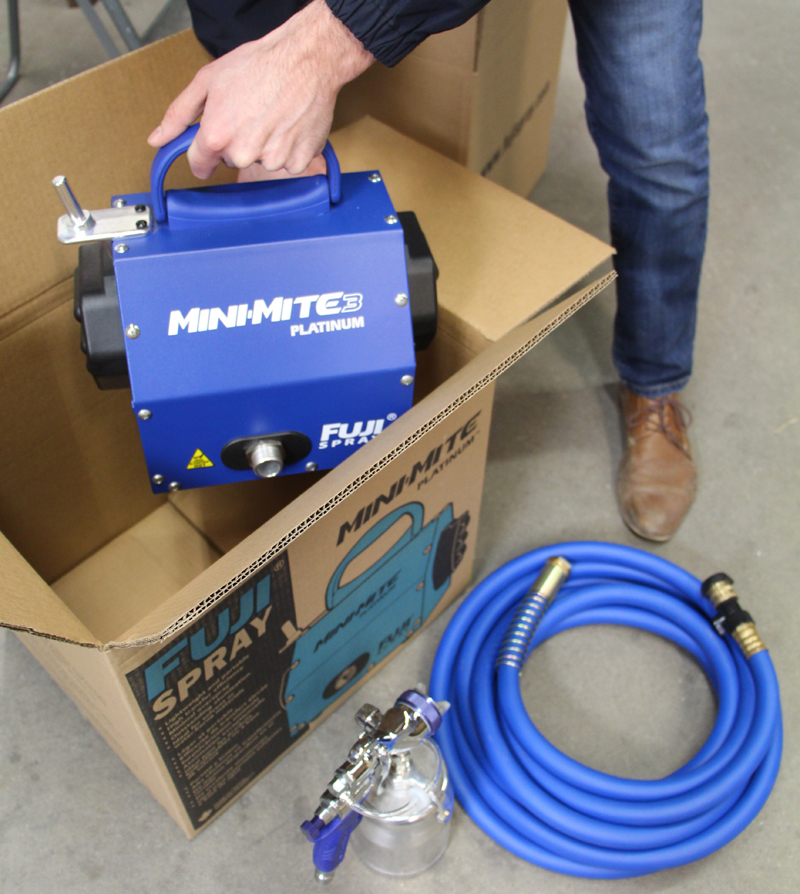Unpackaging your first HVLP Turbine Sprayer
Unpackaging your first HVLP Turbine Sprayer: What to do before you pull the trigger:
Regardless of how old we get, it is hard to contain our excitement when a new toy (or tool) arrives.
When unpackaging your first HVLP Turbine Spray system be sure to consider the following:
- Register your Product:
- Prior to setting up your new spray system, be sure to take a few moments to register your product – whether online or in mail form. For most HVLP manufacturers, this will help expedite any future warranty claims you may be required to submit.
- Read the Manual:
- If you are new to HVLP turbine spraying or spraying in general, reading the user manual is imperative. The user manual found with your system will contain a multitude of information including; warranty details, troubleshooting instructions, air cap set guide with viscosity index, parts list and exploded diagram, and retail outlets for purchasing and/or service.
- Preparing your Spray Gun:
- Before using your spray gun, run a small amount of clean mineral spirits through the spray gun. By doing this you will clean out any impurities that may have accumulated in the spray gun during assembly and shipping. If using waterborne finishes, rinse out the residual mineral spirits with denatured alcohol and follow up by spraying water through the spray gun.
- Familiarize Yourself with your Spray Gun:
- Whether you are new to spray finishing or a seasoned professional, it is best practice to familiarize yourself with the different controls such as fluid, air, and fan pattern. Fill your cup ¾ of the way with water and begin spraying on a piece of cardboard. While spraying, adjust the different controls on your spray gun to see the effect on your atomization and overall spray performance.
- Practice Make Perfect:
- Now that you have familiarized yourself with all the control features of your spray gun, it is time for final testing. Grab a small scrap piece of wood and try spraying your desired material on the piece. Observe how the material atomizes out of your spray gun as well as how it lays down on your piece. Master your technique by focusing on the spray gun distance and the speed of your pass. At this point you can troubleshoot most of your potential spray issues before starting your final project. For example, if you notice orange-peel, try reducing the volume of material or increasing the volume of air. If you are noticing dry spray, try reducing the volume of air or increasing the volume of material.
By following these steps, you can save the hassle of unnecessary re-works and give yourself the confidence to take on any future project you are presented with – regardless of your familiarity with the material you are spraying.
By: Jim Larin
Post a Comment
You must be logged in to post a comment.



